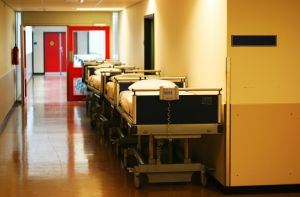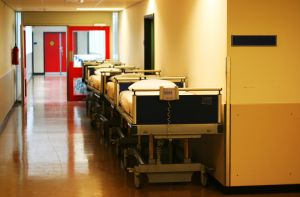
Typically the prognosis for anyone undergoing a routine form of surgery is good to excellent. And certainly a tonsillectomy would fall into the category of one of the most routine of surgeries. That’s why Bay Area personal injury attorney Gregory J. Brod is as shocked as the rest of the community and the nation over the tragic case of a teenager in Oakland who is now clinically brain dead after having her tonsils removed.
Procedure Done in Hopes of Controlling Sleep Apnea
According to the San Jose Mercury News, Jahi McMath, 13, checked into Children’s Hospital Oakland for tonsil surgery on Dec. 9. McMath suffered from sleep apnea, which is a potentially serious sleep disorder in which the afflicted person’s breathing is repeatedly interrupted during sleep, and her doctors felt that removal of her tonsils would help alleviate the sleep apnea.
Just after her surgery, McMath seemed healthy and alert, but later that evening she began to bleed and then she went into cardiac arrest. After experiencing a massive swelling in her brain, McMath was pronounced brain dead three days after the operation. Tests conducted since the operation have shown no brain activity.
McMath’s family has sought to keep her on life support, but her mother said that staff at the hospital had been pressuring her to sign paperwork to take McMath off life support and release her body to the Alameda County coroner’s office. In response, the McMath family attorney has delivered a cease-and-desist letter to officials at the hospital to keep the teenager alive.
Hospital Staff Remains Mum
Children’s Hospital Oakland officials decline to discuss the specifics of the case, claiming that the family has denied them permission to speak on the matter. As is the case in such situations, privacy laws forbid a hospital from releasing information concerning a patient’s condition or care without his or her consent.
Meanwhile, the McMath family understandably has maintained a vigil for their stricken teenager. And the family had been touched by the outpouring of support from strangers.
“A lot of people here don’t know my daughter, and they came out to pray for her, said Nailah Winkfield, the girl’s mother. “I can’t wait to get back to the hospital and tell her how many people are praying for her.”
Indeed, many are praying for her recovery, and news of her condition has spread around the world. McMath’s story has resonated on social media, where there has been an upwelling of support for the family.
For their part, the family is appreciative of the support and maintains hope that McMath will recover.
“We’d like to thank everyone across the nation who took time to pray for Jahi,” said Omari Sealey, the girl’s uncle. “We feel rejuvenated, we feel recharged, and we are ready. We are praying for a medical miracle, but we are also praying for the hospital to have more compassion.”
Continue Reading ›
 San Francisco Injury Lawyer Blog
San Francisco Injury Lawyer Blog



 Abbott Laboratories manufacturers Androgel, a testosterone gel used by millions of men worried about low testosterone (“Low T”) levels as they age. Testosterone levels decline starting around age forty and drugmakers, along with some physicians, have touted the benefits of gel for reversing some signs of aging. However, as discussed in
Abbott Laboratories manufacturers Androgel, a testosterone gel used by millions of men worried about low testosterone (“Low T”) levels as they age. Testosterone levels decline starting around age forty and drugmakers, along with some physicians, have touted the benefits of gel for reversing some signs of aging. However, as discussed in  Our
Our  In total $850,000 in fines were issued for five different types of medical errors. Agents of the California Department of Public Health are trained to look for
In total $850,000 in fines were issued for five different types of medical errors. Agents of the California Department of Public Health are trained to look for